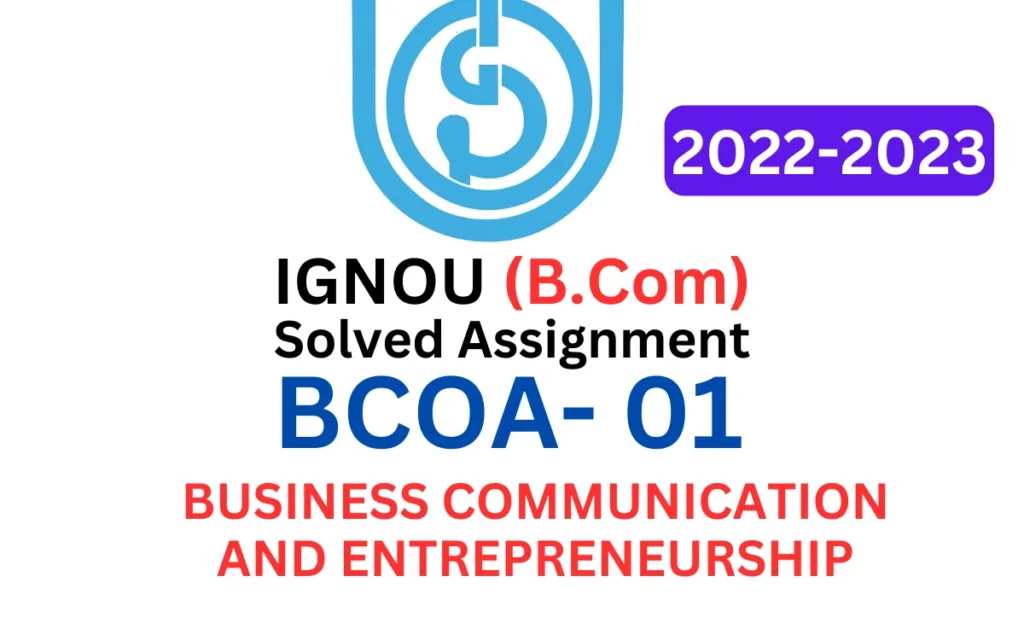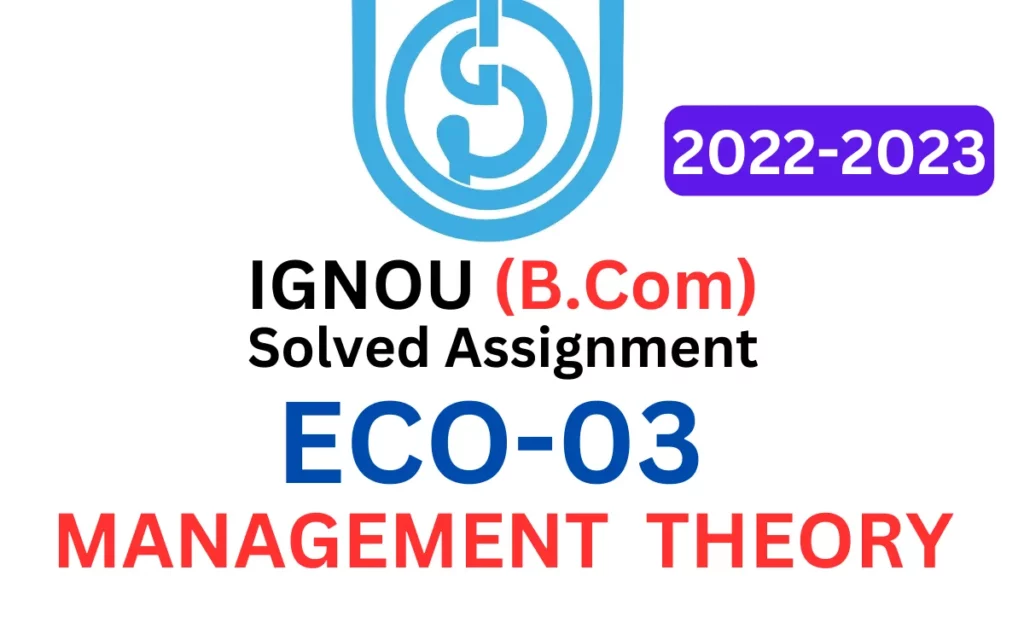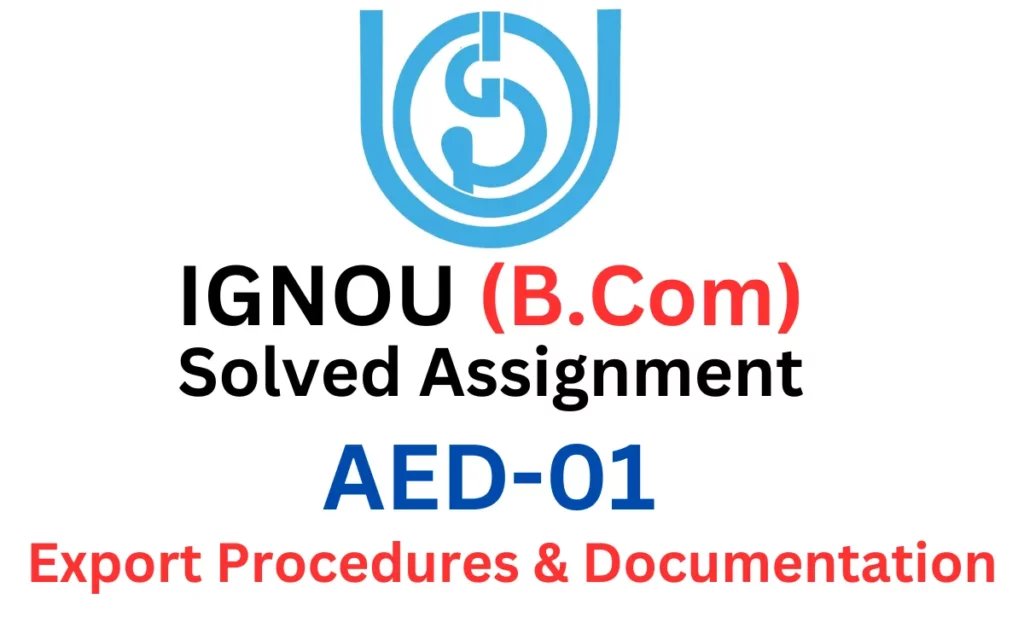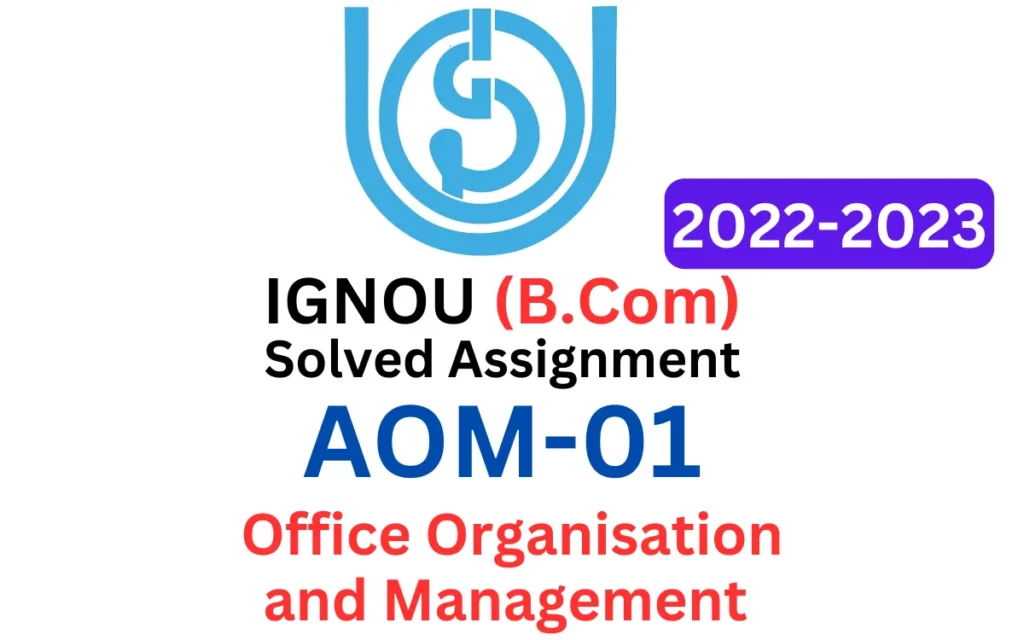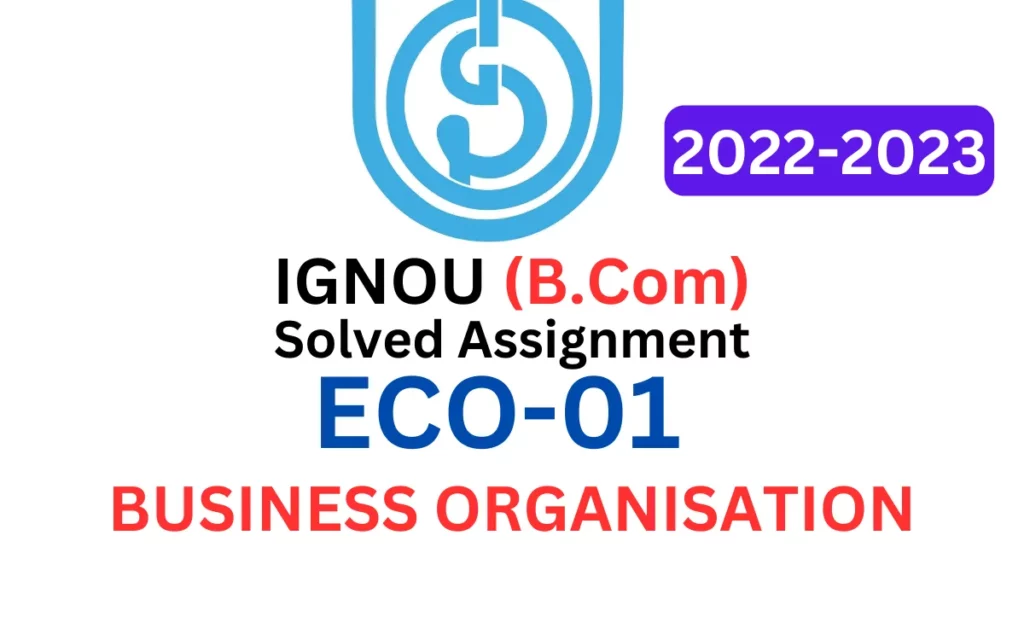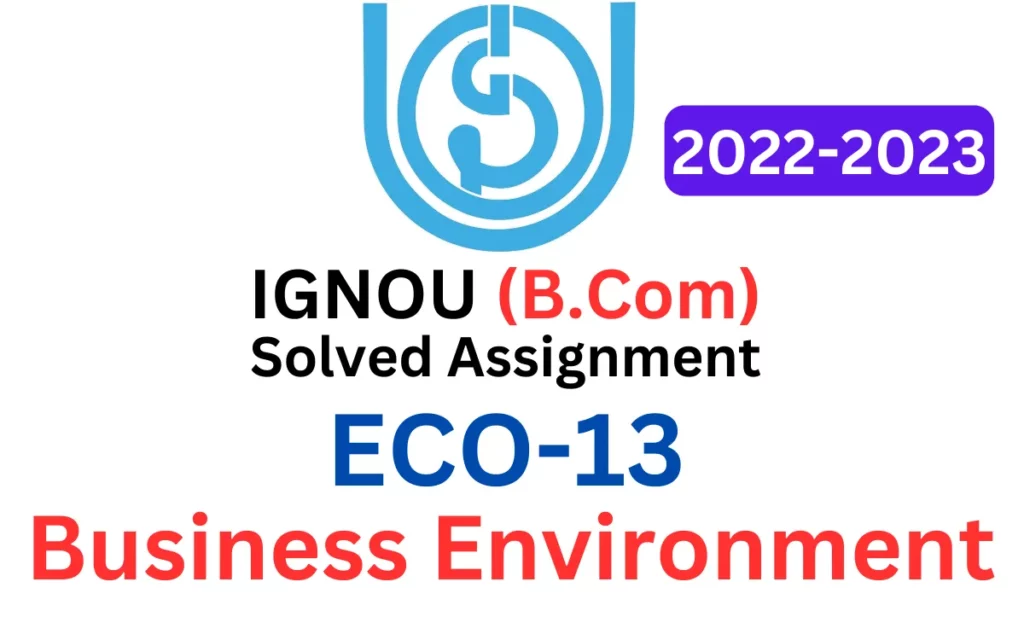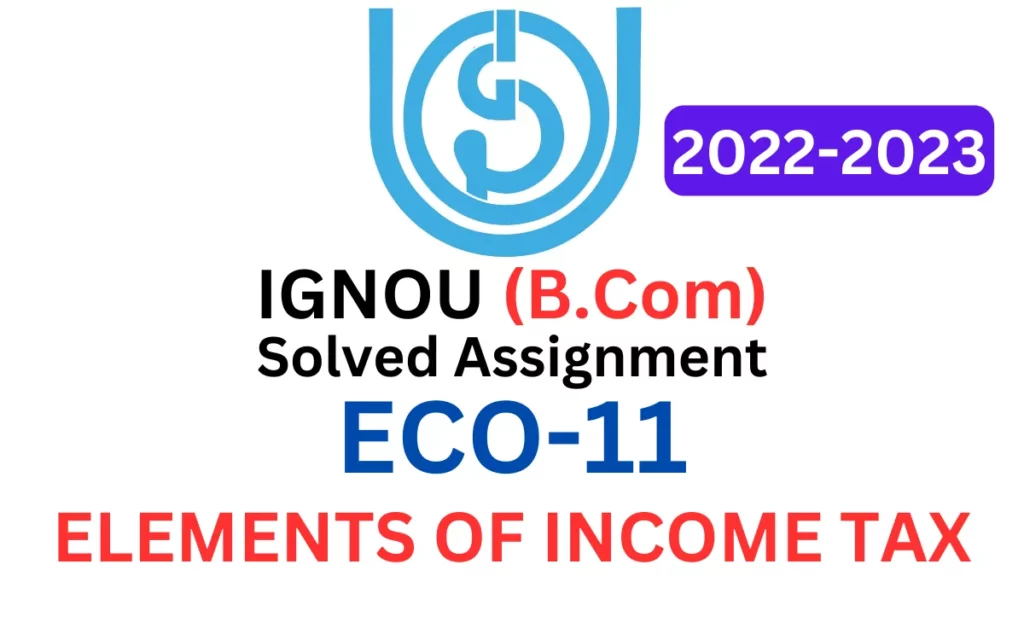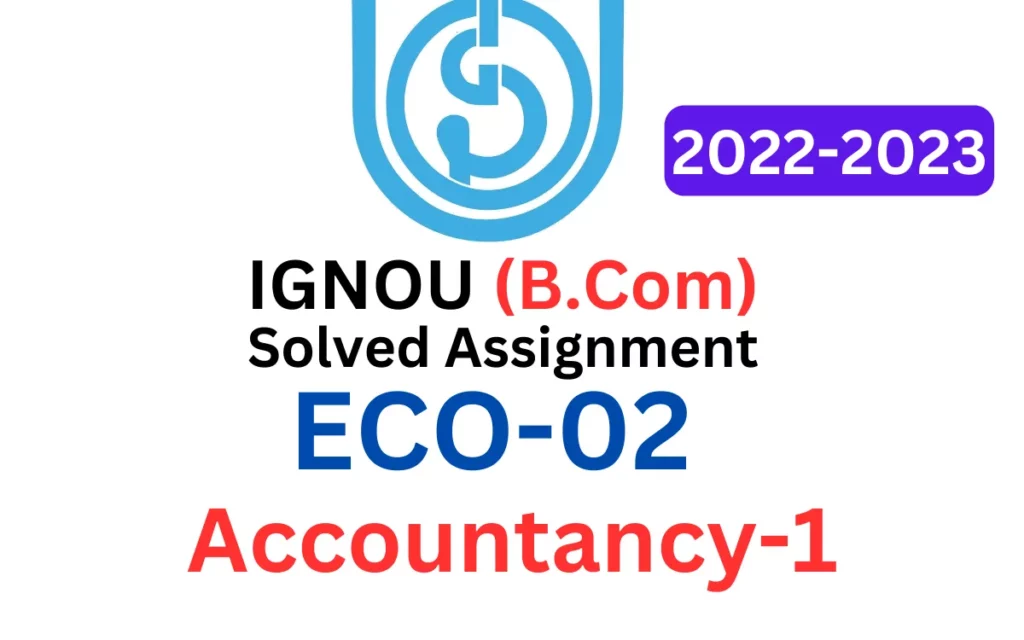Contents
- 1 1. What do you mean by market segmentation? Explain the importance of market segmentation.
- 2 2. What is product life cycle? Discuss the various stages in the life cycle of a product.
- 3 3. Write short notes on the following:
- 4 (a) Consumer Behavior
- 5 (b) Trade Promotion
- 6 (c) Ware housing
- 7 (d) Services
- 8 4. Differentiate between the following:
- 9 (a) Publicity and Advertisement
- 10 (b) Selective Distribution and exclusive distribution
- 11 (c) Broker and Commission agent
- 12 (d) Retailer and Wholesaler
- 13 5. Comment briefly on the following statement:
- 14 (a) Marketing is the most important activity of any business.
- 15 (b) An effective system of physical distribution greatly helps a firm in achieving its marketing objectives.
- 16 (c) Finding an appropriate brand name for a new product is a tricky job.
- 17 (d) When a new product is launched in the market, the manufacturer enjoys flexibility in the matter of prise setting.
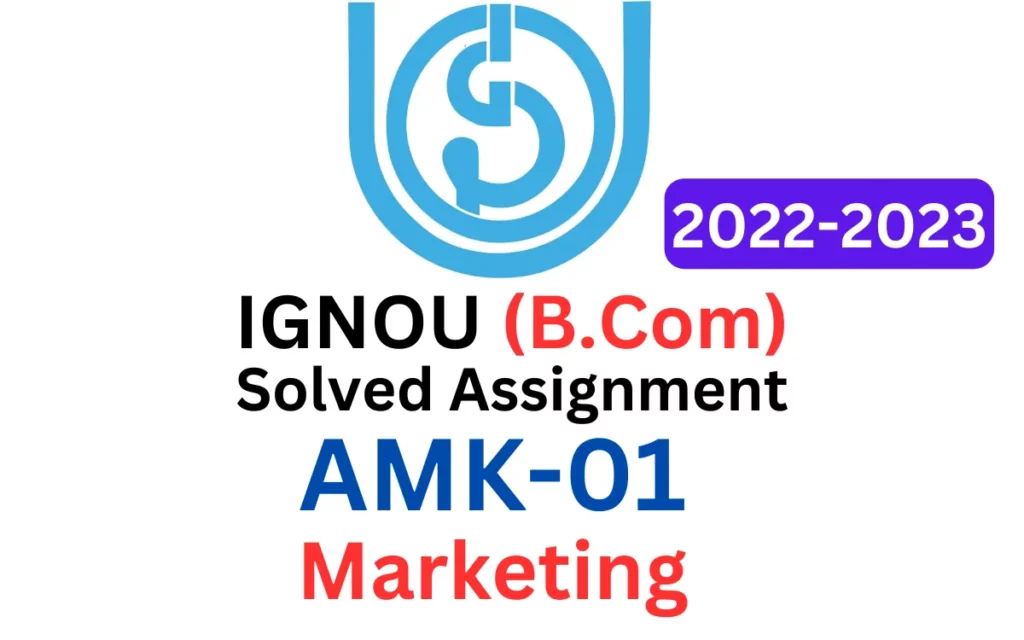
| Title | AMK-01: IGNOU B.Com(G) CBCS Solved Assignment 2022-2023 |
| University | IGNOU |
| Degree | Bachelor Degree Programme |
| Course Code | AMK-01 |
| Course Name | Marketing |
| Programme Name | B.Com |
| Programme Code | BDP |
| Total Marks | 100 |
| Year | 2022-2023 |
| Language | English |
| Assignment Code | AMK-01/TMA/2022-2023 |
| Assignment PDF | Click Here |
| Last Date for Submission of Assignment: | For June Examination: 31st April For December Examination: 30th September |
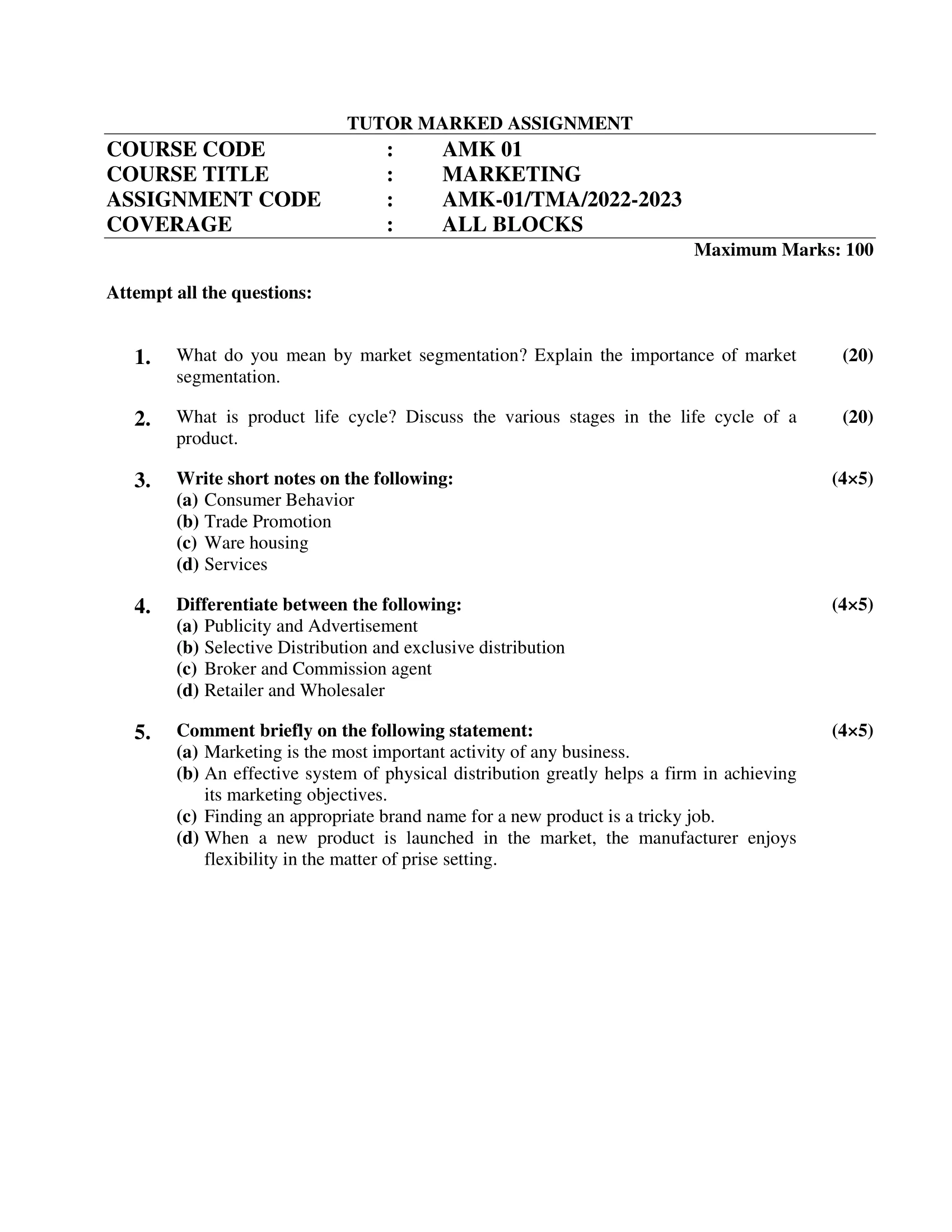
1. What do you mean by market segmentation? Explain the importance of market segmentation.
Ans: Market segmentation is the process of dividing a larger market into smaller, more targeted groups of consumers who have similar needs, interests or characteristics. The goal of market segmentation is to identify the specific needs and preferences of each group, and to develop marketing strategies that are tailored to those needs.
Market segmentation is important for several reasons:
- Better understanding of customer needs: By dividing the market into smaller segments, companies can gain a better understanding of the specific needs and preferences of each group. This enables them to tailor their products, services, and marketing messages to meet the needs of each segment.
- Improved marketing effectiveness: By targeting specific segments with tailored marketing messages, companies can improve the effectiveness of their marketing campaigns. This is because the messages are more relevant and resonant with the target audience, resulting in higher response rates and better ROI.
- Increased customer satisfaction: When companies are able to tailor their products and services to the specific needs of each segment, they are more likely to meet or exceed the expectations of their customers. This leads to higher levels of customer satisfaction, which in turn can lead to increased loyalty and repeat business.
- Competitive advantage: By segmenting the market and developing targeted strategies, companies can gain a competitive advantage over their competitors. This is because they are better able to differentiate themselves in the market and provide more value to their customers.
2. What is product life cycle? Discuss the various stages in the life cycle of a product.
Ans: Product life cycle refers to the different stages that a product goes through over the course of its existence in the marketplace. The product life cycle concept is an important tool for marketers, as it helps them understand the different challenges and opportunities that a product is likely to face at different stages of its life cycle.
There are typically four stages in the product life cycle, which are as follows:
- Introduction: This is the stage where a new product is introduced into the market. At this stage, sales are typically low, and the product may not be profitable. The focus of marketing efforts is on creating awareness of the product and generating interest among potential customers.
- Growth: In the growth stage, sales of the product begin to increase rapidly. This is typically the most profitable stage for the product. At this stage, the focus of marketing efforts is on increasing market share and building brand loyalty.
- Maturity: In the maturity stage, sales growth begins to slow down. At this stage, the market is typically saturated with competing products, and the focus of marketing efforts is on maintaining market share and defending against competition.
- Decline: In the decline stage, sales of the product begin to decline, as it faces increased competition from newer and more innovative products. At this stage, the focus of marketing efforts is on either revitalizing the product through product innovation or finding new uses for the product in order to extend its life cycle.
It is important to note that not all products follow the same life cycle pattern, and some products may skip one or more of the stages. Additionally, the length of each stage may vary depending on factors such as the product category, level of competition, and changes in consumer preferences. Understanding the product life cycle is important for marketers, as it helps them make informed decisions about product development, pricing, distribution, and promotion.
3. Write short notes on the following:
(a) Consumer Behavior
Ans: Consumer behavior refers to the actions and decisions made by individuals and households when they search for, evaluate, purchase, use, and dispose of goods and services. It involves understanding the factors that influence consumer decision-making, such as personal preferences, attitudes, beliefs, and social and cultural influences.
Marketers and businesses use knowledge of consumer behavior to design effective marketing strategies, products, and services that meet consumer needs and wants. Understanding consumer behavior is critical for businesses to create a positive brand image, build customer loyalty, and drive sales.
Consumer behavior research includes both qualitative and quantitative methods, such as surveys, focus groups, and observational studies. It also involves analyzing data from sources such as social media, online reviews, and purchase records to understand consumer trends and preferences.
(b) Trade Promotion
Ans: Trade promotion refers to the marketing activities that businesses use to encourage retailers, wholesalers, and distributors to promote and sell their products or services to end consumers. The goal of trade promotion is to increase sales and market share by incentivizing intermediaries in the distribution chain.
Trade promotion strategies may include offering discounts or rebates to intermediaries, providing free product samples or demonstrations, offering promotional pricing or financing terms, and hosting trade shows or other events. These activities aim to encourage intermediaries to stock and promote the company’s products, ultimately driving consumer demand.
Trade promotion is often used in conjunction with consumer promotion, which targets end consumers directly. Together, these two promotion strategies can create a powerful marketing mix that helps businesses achieve their sales and marketing objectives.
Effective trade promotion requires a deep understanding of the distribution channels for a particular product or service, as well as the needs and motivations of intermediaries. Companies must also carefully track the return on investment of their trade promotion activities to ensure that they are delivering value and driving sales.
(c) Ware housing
Ans: Warehousing refers to the process of storing and managing inventory in a designated facility or warehouse. The primary purpose of warehousing is to ensure that products are available to fulfill customer orders in a timely and efficient manner.
Warehousing activities include receiving and unloading products from suppliers, storing products in a designated location within the warehouse, tracking inventory levels and locations, and picking and packing products for shipment to customers.
There are several different types of warehouses, including public warehouses that are available to multiple companies, private warehouses that are owned and operated by a single company, and distribution centers that are specifically designed to handle and distribute products for a particular company or product line.
Effective warehouse management involves optimizing inventory levels to balance the costs of holding inventory with the need to ensure that products are readily available for customers. This requires careful planning and coordination with suppliers and logistics partners, as well as the use of sophisticated inventory management systems and software.
In addition to storing and managing inventory, warehouses may also offer additional services such as order fulfillment, kitting and assembly, and even light manufacturing or product customization. These value-added services can help businesses streamline their operations and improve their competitiveness in the marketplace.
(d) Services
Ans: Services refer to intangible products or activities that are provided to customers in exchange for payment. Unlike physical products, services are not tangible and cannot be held, touched, or seen. Examples of services include haircuts, consulting services, education, healthcare, and transportation.
Services are typically characterized by four key characteristics: intangibility, inseparability, variability, and perishability. Intangibility refers to the fact that services cannot be touched or physically possessed. Inseparability means that services are often produced and consumed simultaneously, meaning that the customer is part of the service experience. Variability refers to the fact that the quality of services may vary depending on who is providing them and the circumstances in which they are provided. Perishability means that services cannot be stored or saved for later use.
Due to their intangible nature, services are often marketed and sold differently than physical products. Service marketing typically focuses on building trust and relationships with customers, emphasizing the quality and value of the service experience, and highlighting the expertise and qualifications of service providers.
Service industries are a significant part of many economies, and they continue to grow as technology and globalization make it easier to provide and access services across borders. As a result, there is a growing demand for skilled workers in service industries, and businesses are investing in new technologies and innovative service models to stay competitive.
4. Differentiate between the following:
(a) Publicity and Advertisement
Ans: Publicity and advertising are two different forms of communication that companies use to promote their products or services. While both have the same ultimate goal of generating awareness and interest in a brand or product, there are some key differences between the two:
- Definition: Publicity refers to any unpaid form of promotion that is generated through media coverage or word-of-mouth. Advertising, on the other hand, is a paid form of promotion that involves creating and placing advertisements in various media channels.
- Control: Publicity is not directly controlled by the company, as it relies on the media or other external sources to promote the product. Advertising, on the other hand, is fully controlled by the company, as they have complete control over the content and placement of the advertisements.
- Credibility: Publicity is generally considered more credible than advertising, as it is generated by external sources such as the media or consumer reviews. Advertising, on the other hand, is often seen as biased, as it is created and paid for by the company itself.
- Cost: Publicity is usually less expensive than advertising, as it does not involve paid placements in media channels. Advertising, on the other hand, can be very expensive, particularly for large-scale campaigns.
- Reach: Publicity can have a broader reach than advertising, as it can generate interest and awareness among people who may not have been directly targeted by the company. Advertising, on the other hand, is generally targeted to specific audiences and may not reach as wide of an audience.
(b) Selective Distribution and exclusive distribution
Ans: Selective distribution and exclusive distribution are two different strategies that companies use to distribute their products. The main differences between the two are as follows:
Selective Distribution: Selective distribution is a strategy in which a company selects only a few retailers or distributors to carry its products. This strategy is often used for products that are sold through specialty retailers or for companies that want to maintain a certain level of control over the distribution of their products. Some key features of selective distribution include:
- Limited number of retailers or distributors: The company only chooses a small number of retailers or distributors to carry its products.
- High-quality retailers or distributors: The retailers or distributors chosen by the company are usually high-quality and reputable businesses.
- Control over distribution: The company maintains a certain level of control over the distribution of its products.
- Increased brand image: The limited distribution helps to create a sense of exclusivity and prestige for the product.
Exclusive Distribution: Exclusive distribution is a strategy in which a company chooses only one retailer or distributor to carry its products in a particular geographic region. This strategy is often used for high-end luxury products or for companies that want to maintain tight control over the distribution of their products. Some key features of exclusive distribution include:
- Limited number of retailers or distributors: The company chooses only one retailer or distributor to carry its products in a particular geographic region.
- High-quality retailer or distributor: The retailer or distributor chosen by the company is usually a high-quality and reputable business.
- Tight control over distribution: The company maintains tight control over the distribution of its products, including pricing, marketing, and branding.
- Increased brand image: The exclusive distribution helps to create a sense of exclusivity and prestige for the product.
(c) Broker and Commission agent
Ans: A broker and a commission agent are two types of intermediaries that help facilitate transactions between buyers and sellers. The main differences between the two are as follows:
Broker: A broker is an intermediary who acts as a middleman between buyers and sellers. The main function of a broker is to bring buyers and sellers together and facilitate the transaction. The broker does not take ownership of the goods or services being bought or sold. Instead, the broker earns a commission or fee for their services. Some key features of a broker include:
- Acts as an intermediary: The broker acts as a middleman between buyers and sellers, helping to bring them together and facilitate the transaction.
- Does not take ownership: The broker does not take ownership of the goods or services being bought or sold.
- Earns a commission or fee: The broker earns a commission or fee for their services, which is usually a percentage of the total transaction value.
- No liability for the goods or services: The broker is not liable for the quality, quantity, or delivery of the goods or services being bought or sold.
Commission Agent: A commission agent is an intermediary who acts on behalf of the buyer or seller. The main function of a commission agent is to negotiate and finalize the transaction on behalf of their principal. The commission agent may take possession of the goods or services being bought or sold, but only as an agent of the principal. The commission agent earns a commission or fee for their services. Some key features of a commission agent include:
- Acts on behalf of the buyer or seller: The commission agent acts on behalf of the buyer or seller, negotiating and finalizing the transaction on their behalf.
- May take possession: The commission agent may take possession of the goods or services being bought or sold, but only as an agent of the principal.
- Earns a commission or fee: The commission agent earns a commission or fee for their services, which is usually a percentage of the total transaction value.
- Liability for the goods or services: The commission agent is liable for the quality, quantity, and delivery of the goods or services being bought or sold.
(d) Retailer and Wholesaler
Ans: Retailers and wholesalers are two different types of businesses involved in the distribution and sale of goods to consumers. The main differences between the two are as follows:
Retailer: A retailer is a business that sells goods directly to consumers. Retailers typically purchase goods from wholesalers or manufacturers and then sell them to individual consumers at a higher price. Some key features of a retailer include:
- Sells directly to consumers: The retailer sells goods directly to consumers through a physical store, online store, or other means.
- Higher prices: Retailers purchase goods from wholesalers or manufacturers at a lower price and then sell them to consumers at a higher price.
- Smaller quantities: Retailers typically purchase goods in smaller quantities than wholesalers.
- Focus on marketing and customer service: Retailers often focus on marketing and customer service to differentiate themselves from competitors.
Wholesaler: A wholesaler is a business that sells goods in bulk to retailers or other businesses. Wholesalers purchase goods directly from manufacturers and then sell them to retailers or other businesses at a lower price. Some key features of a wholesaler include:
- Sells to businesses: The wholesaler sells goods to retailers or other businesses, not directly to consumers.
- Lower prices: Wholesalers purchase goods directly from manufacturers at a lower price and then sell them to retailers or other businesses at a higher price.
- Larger quantities: Wholesalers typically purchase goods in larger quantities than retailers.
- Focus on logistics and supply chain management: Wholesalers often focus on logistics and supply chain management to ensure that goods are delivered on time and in the right quantities.
5. Comment briefly on the following statement:
(a) Marketing is the most important activity of any business.
Ans: The statement “Marketing is the most important activity of any business” is a matter of debate and perspective. While marketing is undoubtedly an essential function for any business to succeed, it may not necessarily be the most important activity.
Marketing helps businesses identify and satisfy customer needs, build brand recognition, and generate revenue. However, other critical activities such as production, finance, and operations management are equally important in ensuring a business’s success. For example, a business cannot succeed if it does not produce quality products or services, manages its finances effectively, or operates efficiently.
Furthermore, the relative importance of marketing may vary depending on the type of business and its industry. For example, marketing may be more critical for a startup company trying to establish itself in a competitive market than for a well-established business with an established customer base.
(b) An effective system of physical distribution greatly helps a firm in achieving its marketing objectives.
Ans: An effective system of physical distribution is a critical component of a firm’s overall marketing strategy, as it plays a significant role in helping the company achieve its marketing objectives. A well-designed physical distribution system ensures that products are delivered to customers in a timely, cost-effective, and reliable manner, which can enhance customer satisfaction, build brand loyalty, and ultimately drive sales.
One of the primary benefits of an effective physical distribution system is that it can help a firm reach its target market more efficiently. By identifying and optimizing the most efficient distribution channels and routes, a company can ensure that its products are available where and when customers need them, which can improve the customer experience and increase sales.
Effective physical distribution can also help a firm manage costs and improve profitability. By minimizing transportation and logistics costs, reducing inventory levels, and optimizing the use of resources, a company can improve its bottom line and invest in other critical areas such as research and development, marketing, and customer service.
Furthermore, an effective physical distribution system can help a firm respond to changing market conditions and customer needs more quickly and efficiently. By using real-time data and analytics, a company can identify trends and opportunities and adjust its distribution strategy accordingly, ensuring that it remains competitive and relevant in a rapidly evolving marketplace.
(c) Finding an appropriate brand name for a new product is a tricky job.
Ans: Finding an appropriate brand name for a new product is indeed a challenging task, as the brand name can significantly impact the product’s success in the market. A brand name should be distinctive, memorable, and easy to pronounce, while also conveying the product’s value proposition and resonating with the target audience.
One of the primary challenges in finding an appropriate brand name is ensuring that it is not already in use or trademarked by another company. Conducting a thorough trademark search is essential to avoid legal issues and potential confusion among customers.
Another challenge is ensuring that the brand name is relevant and appealing to the target audience. The name should reflect the product’s key features, benefits, and attributes and evoke positive associations with the brand.
It is also essential to consider the cultural and linguistic implications of the brand name, particularly if the product is intended for international markets. A brand name that is offensive or inappropriate in a particular culture or language can damage the brand’s reputation and hinder its success.
To overcome these challenges, companies often engage in extensive market research and brainstorming sessions to generate a list of potential brand names. They may also work with branding agencies or consultants to develop and test brand concepts and conduct legal checks to ensure that the chosen name is available and appropriate.
(d) When a new product is launched in the market, the manufacturer enjoys flexibility in the matter of prise setting.
Ans: When a new product is launched in the market, the manufacturer may enjoy some flexibility in pricing decisions, but this flexibility is limited by various factors.
On one hand, the manufacturer may have some pricing flexibility if there are no direct competitors offering similar products in the market. In this case, the manufacturer may set a high price for the new product to capitalize on the novelty and uniqueness of the product and to recoup the costs of research and development, marketing, and production.
On the other hand, if there are already established competitors in the market offering similar products, the manufacturer may have less pricing flexibility. In this case, the manufacturer may need to set a competitive price to attract customers and gain market share.
Moreover, pricing decisions are influenced by various internal and external factors, such as production costs, distribution costs, target market, demand and supply, and legal and ethical considerations. For example, if the production costs are high, the manufacturer may need to set a higher price to ensure profitability. Similarly, if the product is targeted at a premium market segment, the manufacturer may set a higher price to reflect the product’s perceived value.
In addition, legal and ethical considerations may also limit the manufacturer’s pricing flexibility. For example, some countries have laws or regulations that prohibit price gouging, price fixing, or unfair pricing practices.
How to Download AMK-01 Solved Assignment?
You can download it from the www.edukar.in, they have a big database for all the IGNOU solved assignments.
Is the AMK-01 Solved Assignment Free?
Yes this is absolutely free to download the solved assignment from www.edukar.in
What is the last submission date for AMK-01 Solved Assignment?
For June Examination: 31st April, For December Examination: 30th October

